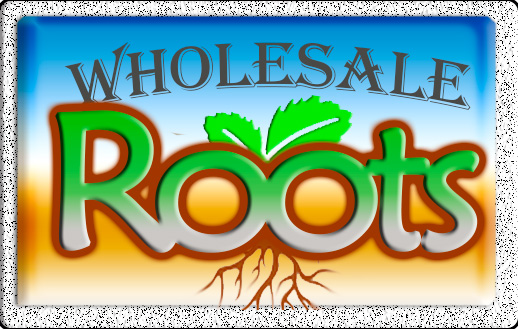Rose of the Mountain Bark

(Brownea Sp.)
This tropical flowering tree native to the rainforests of Central and South America, valued for treating diabetes and lowering blood sugar and cholesterol. Traditionally it has also be utilized by women to overcome menorrhagia, vaginal hemorrhagia and menstrual pains. The presence of bioactive compounds like flavonoids, phenolic acids, tannins, and lignans contribute to reducing inflammation and combat any form of kidney disease.
Rose of the mountain bark Medicinal Uses & Benefits of Rose* Aphrodisiac * Aromatherapy * Beauty * Cuts & Wounds * Facial Care * Herbal Steam * Nutrition * Skin Care * AntiCancer * Antidepressant * Antiscorbutic * Antispasmodic * Aphrodisiac * Aromatic * Astringent * Coagulant/Hemostatic * Cordial * Depurative * Emmenagogue * Hepatic * Laxative * Nervine * Refrigerant * Sedative * Skin tonic * Splenic * Stomachic * Uterine Tonic Hips, flower petals, leaves, bark vitamin c (to 1.7%), vitamins b,e, and k, nicotinamide, organic acids, tannin, pectin
How to Use: Rose
The rose was one of the most valued medicinal plants in the monastery gardens of medieval Europe. Rose petals suitable for medicinal purposes must yield a deep rose-colored, astringent, and fragrant infusion when boiling water is poured upon them. Unfortunately many modern cultivars have been chosen more for vibrant display at the cost of aromatic scent. When we consider rose as a medicinal herb today, we tend to focus only of the high vitamin C content of the rosehips, or the value rose holds in healing damaged skin. A closer look reveals even more of the healing powers of this classic garden The rose is sensual, evocative, and evokes the spirit of love in the heart and mind. Rose is a classic aphrodisiac because it affects both mind and body in a synergistic fashion. The scent of roses can reach within to lift depressive moods and create a feeling of well being and mild euphoria.
Brownea latifolia Jacq. LEGUMINOSAE-CAESALP. Rose of the mountainVernacular names: Rose of the mountain (Cr), Hichi okobia1, Bímiti-wallaban2, (Ar), Tukusyiwokuru2(C), Atarno, Hukuhuku ahobi arau2, Hotoquai aha3(Wr).Botanical description: Tree, to 15 m tall; trunk to 15 cm in diam. Outer bark grey-brown, inner barkreddish brown, sweet-scented, sapwood whitish. Branches spreading. Leaves alternate, 6-12-foliolate,rachis to 30 cm long; stipules caducous; petiole 1 cm long; leaflets alternate, ovate-elliptic, to 16 x 6cm, glabrous above, greyish green below, apex long-acuminate, with a gland on the inside at the baseof the midrib. Inflorescences terminal or lateral racemes, in two or three, many-flowered clusters;bracts ovate to linear, ca. 2.5 cm long, sparsely puberulous outside. Flowers slightly zygomorphic;receptacular tube 1.2 cm long; sepals 4, red, glabrous, ca. 2 cm long, apex emarginate; petals 5, brightred, obovate, ca. 4 cm long, narrowed into a claw 1.5 cm long, apex subemarginate; stamens 10-12,connate, ca. 4 cm long; ovary superior, rusty brown puberulous, style 1, ca. 6 cm long. Pod flat,green, stipitate, acute, curved, ca. 25 x 5 x 0.5 cm, longitudinally dehiscent, valves coiling up afterdehiscence; seeds 4-6, compressed, irregularly formed, ca. 2 x 2 cm.Distribution and ecology: In Venezuela, Colombia, and Guyana. In northwest Guyana, frequent inriverbank Mora forest, occasionally in secondary forest. In Barama, flowers and fruits were seen inDecember. Flowers are pollinated by hummingbirds; seeds are probably dispersed by fish and water.Use: The bark of this small tree is boiled in water, until the liquid gets brown. The tea is strained,after which sugar and milk are added to make a hot, nutritious beverage that resembles Ovomaltine.The drink is also recommended for stomach ache, diabetes, and vomiting of blood (Reinders, 1993).The red flowers are considered to be an effective medicine to stop haemorrhage. They must be boiledin water and the tea should be drunk until the bleeding stops. The floral tea is also taken for colds andwhooping cough. When flowers are not available, the bark tea is drunk to combat haemorrhage, butthis allegedly does not work as good as the tea from the flowers. The bark is also boiled with themilky bark of kakarawa (Pouteria durlandii) to treat tuberculosis. Greene-Roesel (1995) noted thatthe bark was boiled with hariba (species unknown) and drunk with a little high wine added toovercome infertility.The chemistry of this genus has not been studied, but indigenous groups in Colombia and Ecuadoremploy the bark and flowers of B. latifolia and several other Brownea species as contraceptives andto control bleeding or excessive menstruation (Schultes and Raffauf, 1990; Sánchez, 1996).The seeds are used as fish bait. Simply thrown in quiet streams without current, they attract fishes,which then are speared or shot with bow and arrow. The seeds are also put on a hook to catchmorocots (Myletes sp.). The wood is locally used to build traditional Arawak kitchen walls in the‘wattle and stave’ style, in which young stems are used entirely or split into smaller sticks and wovenbetween a horizontal frame4. The wood is also used for firewood. According to an old Amerindianbelief, playing with the red flowers will cause your teeth to drop out.Economy: The species is used for subsistence only.Notes: (1) ‘Eye wash of the powis’ (Crax alector) (Fanshawe, 1949); (2) These vernacular names all refer to thehummingbirds that visit the flowers; (3) ‘Mountain tobacco’ (Charette, 1980); (4) See plate 29.
